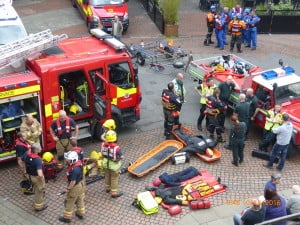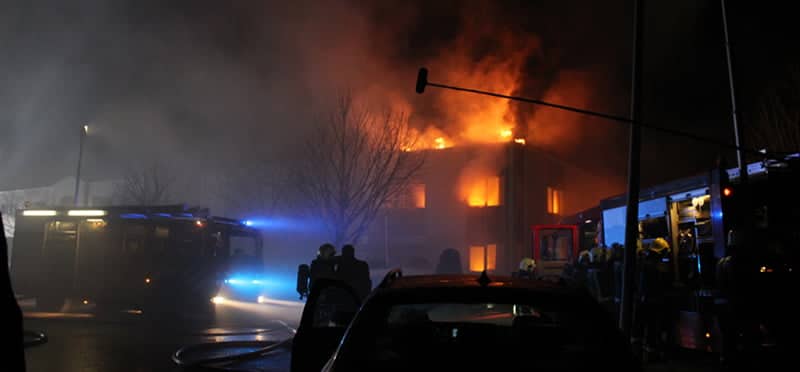Resilience – it seems to be the word of the hour. We read about the importance of resilience in relation to our emergency services frequently, but what does it REALLY mean, and how can training help you and your colleagues become more resilient?
In the Cambridge English Dictionary, it says: “Resilience: the quality of being able to return quickly to a previous good condition after problems”. Taken into context of the emergency services then, when major incidents occur, such as terrorist attacks, tragedies like Grenfell, or natural disasters, a resilient team can react quickly and remain in good organisational shape during and after the incident.
How Training Improves Resilience
It goes without saying that training is one of the main ways that the emergency services and other rescue teams can improve their resilience. Of course, nothing can prepare you fully for a large scale disaster, but being confident in your teams’ reactions and procedures means that you are less likely to be adversely affected in a real-life situation and resume usual operation quickly.
Multi-Agency training is a growing initiative, and surely this is beneficial when building resilience?
Not only does it allow teams to learn to collaborate and cooperate to mutual benefit, it means you can improve your skills and gain experience from others, creating bigger and more realistic training scenarios more easily, with shared running costs.
Certainly, our eyes and ears on social media suggest that multi-agency training is seen a key to building resilience. We often see posts on Twitter and Facebook amongst our connections, praising the large -scale training exercises they have taken part in.
Multi-Agency training scenarios
We have provided manikins for a growing number of multi-agency training scenarios in the past couple of years and are definitely seeing increased interest in our range of manikins for these. Whether you need manikins which can simulate an impalement; with an airway management torso for medical skills training; or even a large, heavy manikin to create a bariatric rescue, we can help.
In 2016, we supplied a large number of manikins to Exercise Unified Response (EUR) – which at the time, was the “biggest multi-agency training exercise in history”! This training simulated a significant building collapse and incorporating heavy transport and mass causalities.
We also provided manikins for an exercise named “Prince Bishop” – which simulated an accident involving a river cruiser, with injured people on the boat and others missing in the River Wear.
Both of these training exercises were highly praised by participants and it’s clear that the combination of large scale scenarios, coupled with realistic rescue challenges (using live actors and a mixture of rescue dummies) was a bonus for those taking part. Whether on land or water, we can provide manikins to create very realistic rescue training, letting you nurture a more resilient and prepared team.
Manikins for all scenarios
Whatever your training scenario, at Ruth Lee, we can provide you with a manikin to suit the training, tailored to your particular needs.
Our Multi-Trauma manikin is a popular choice. This model comes with a cavity in the chest to simulate an impalement, and has detachable limbs, letting you create a full or partial loss of limb. This all helps to promote proper casualty care – after all, if you handle him badly, he could lose a leg!
Mass Casualty manikins are an obvious choice for large scale disaster training. These light-weight manikins are a cost effective choice were you need lots of casualties to be seen, but not necessarily moved. They were used to very good effect in a London training exercise reported in the Evening Standard here
Our full-bodied Airway Management and CPR manikins are a tough and durable choice for medical skills training. They can be partially trapped under rubble, or pinned beneath steel lintels to let teams learn to carry our life-saving skills in more realistic scenarios.
If your training also involves open water, you might consider our Search & Rescue manikin – this is a variation of our popular Man Overboard manikin, but is made from a more inconspicuous black material, making him more difficult to spot.
Fire simulation
Another way of adding extra realism to your training is through using fire simulation. There are some amazing products which allow you to create scenarios which need to be seen to be believed, but are simple to set up, safe and clean too. We are distributors for the FireWare brand of fire simulation products which includes everything from smoke machines and explosion simulators, to sound boxes and fake flames. This photo shows a simulated fire. It’s hard to believe it isn’t real!
We would be happy to offer advice on our range of training manikins and fire simulation products; or even offer you a demonstration if you are based in the UK. Please call our UK Sales Manager Stuart Cheetham on 01490 413 282 or email stuart@ruthlee.com for an informal chat or to make an appointment.



